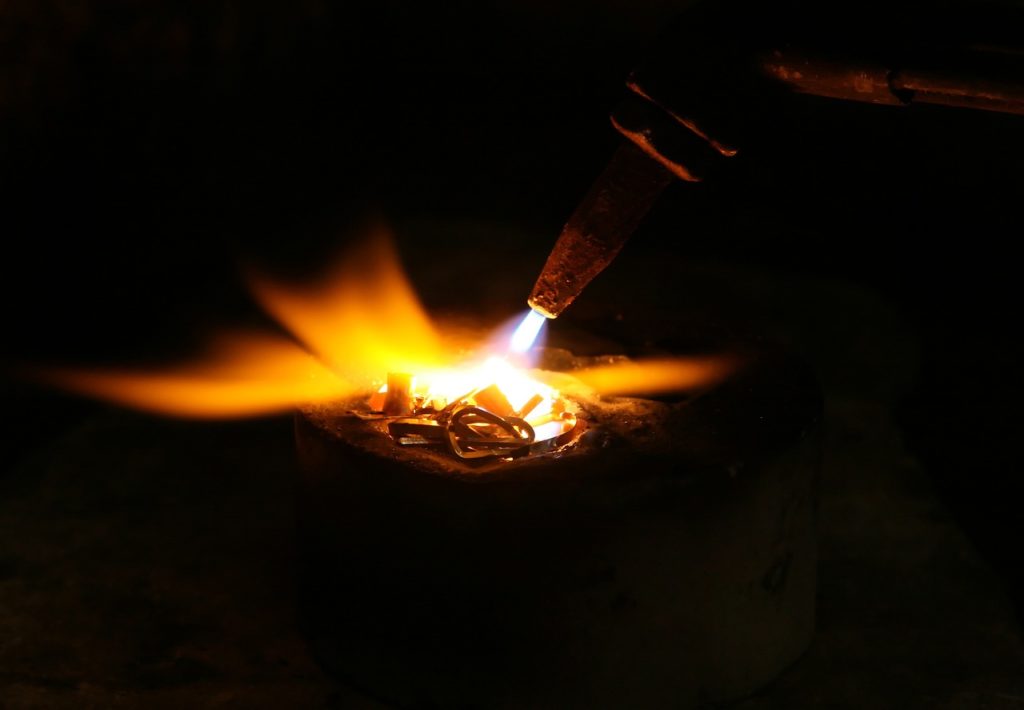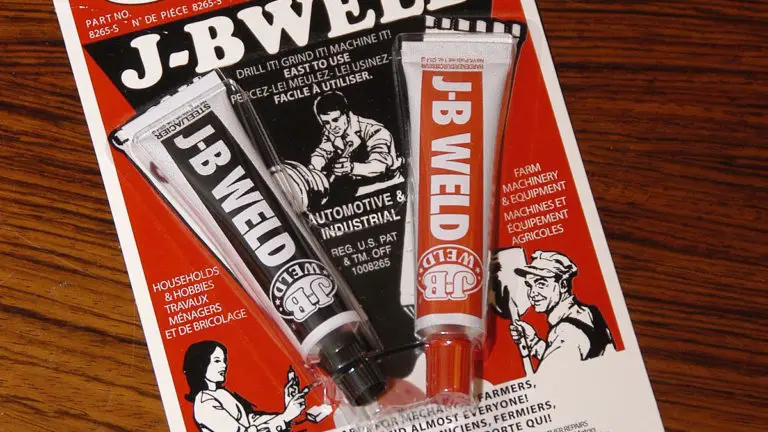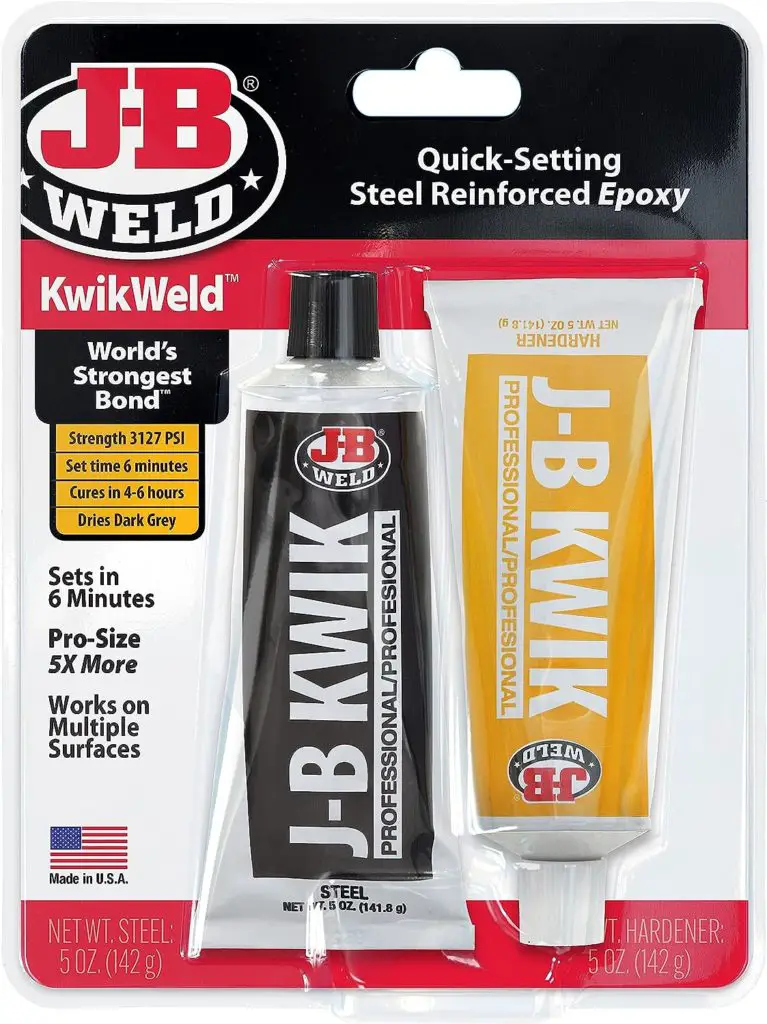JB Weld is an incredibly strong adhesive that is used in a variety of applications, including welding metal pieces together. Most people use JB Weld to fix household items and metals. It is an adhesive that’s as strong as a weld. JB Weld can join almost anything you want, like glass, metal, and plastic.
Although it is very effective in joining and fixing different items, there are times when you might want to undo or redo the repair done with JB weld. Most people don’t know how to do this because of its sturdiness. Here are a few tips to help you safely and effectively get rid of your unwanted JB Weld without damaging the underlying metal.
Is JB Weld Permanent?
JB Welding is a two-part epoxy, also known as a cold weld. It works at a ratio of 1:1 and can create a strong bond on metal and several other surfaces. The bond created by JB is long-lasting and can be very difficult to remove. The JB weld takes about 4-6 hours at room temperature to cure into a dark grey color. However, if you want to cure it fully, you must wait 15-24 hours.
When it is fully cured, the JB welding can form a permanent bond. After it is fully cured, you can file, sand, shape, and even drill it. It offers a tensile strength of up to 5020 and successfully withstand temperatures as high as 550° Fahrenheit.
What Will Dissolve JB Weld?
As a two-part epoxy adhesive that sets to a strong and permanent bond, the JB Weld is resistant to most chemicals. However, several solvents have been known to weaken or dissolve JB Weld effectively. These solvents include:
- Acetone: This is quite common in most industries because of its strong dissolving properties. When used on JB Weld, it can easily penetrate and weaken the bond. This makes it much easier to remove.
- Methyl ethyl ketone: This is another solvent effective in dissolving JB weld. It is used in paint and coating applications and, like acetone, successfully penetrates the bond formed by the JB weld.
- Toluene is another popular solvent in manufacturing coatings, paints, and adhesives. This solvent successfully dissolves the bond formed by JB Weld. However, it has a strong odor and can be very toxic when inhaled.
- Lacquer thinner: This solvent produces lacquer and many more finishes. It can successfully dissolve the bond formed by the J-B weld. However, it also has a strong odor.
When using these solvents to dissolve JB Weld, it is essential to exercise caution and also apply them in a well-ventilated area. It might damage the surface underneath the JB Weld if not applied with caution. Following the manufacturer’s recommendations and guidelines when using these solvents to remove JB Weld is essential.
How Do You Remove Wet JB Weld?

When applied on a surface, the JB weld takes several hours to set and cure. If you change your mind, follow the steps below to remove the wet JB Weld.
- First, try to scrape as much of the wet JB weld as possible off the surface using sharp tools like a putty knife or a blade.
- Next, apply acetone to a cloth and use it to wipe the surface to remove the remaining JB Weld.
- Keep repeating the process of scraping and wiping with acetone till you’ve successfully removed all the wet JB Weld.
- Afterward, clean the surface thoroughly with water and soap to remove the residue left by the solvent.
It’s essential to work carefully when removing wet JB weld to avoid damaging the surface beneath the JB weld.
Will Acetone Remove JB Weld?
Yes, acetone is one of the solvents that’s quite successful in removing JB weld from various surfaces. This solvent will effectively dissolve the epoxy layer and remove it from the surface. However, it’s essential to follow the manufacturer’s instructions when removing it.
Although it is one of the most effective solvents, it’s essential to use it sparingly because it can cause damage to your skin when the concentration is high. Therefore, simply pour it into a clean spray bottle and spray the affected area when using acetone. Let it soak for some minutes before you start to wipe it down.
Does Alcohol Remove JB Weld?
No, alcohol doesn’t remove the JB weld, especially when it is fully hardened and cured. However, you might be able to use it to remove the JB weld while it is still curing. Alcohol is only effective in cleaning and degreasing surfaces. To remove the JB weld after it cures, you must use a stronger solvent like acetone or methyl ethyl ketone.
Does Heat Weaken JB Weld?
Extreme heat is very effective in removing JB welds from surfaces. It can successfully resist heat up to 550 degrees Fahrenheit. Therefore, for heat to be effective in weakening the JB weld, you need to apply 600 degrees or more. When you want to weaken the JB weld using heat, ensure you use a heat gun. Ensure there’s enough ventilation in the area to remove the fumes. When used appropriately, the heat will melt and soften the JB weld so that you can easily peel it off in large sheets. After the sheets are gone, you can remove the rest material.

How to Remove JB Weld from Glass
This is one of the most challenging tasks because of the risk of damaging the glass. However, there are some steps you can follow to remove JB weld from glass, and they’re outlined below.
- First, start by trying to scrape off as much of the world as possible. A razor blade or putty knife is usually effective for this purpose.
- Next, apply acetone to a cloth and gently wipe the glass surface to dissolve whatever’s left after the scraping.
- Repeat the scraping process and then wipe with the solvent consistently until you’ve successfully removed all the JB weld.
- Thoroughly clean the surface with water and soap till all residue from the solvent is gone.
- If the JB weld is set and cured, it might be difficult to remove it with solvents. You might try sanding with fine-grit sandpaper but be careful not to sand too roughly, or it will damage the glass surface.
You must take your time when removing the JB weld from the glass to avoid damage to the surface. If the glass is delicate, you should seek the assistance of a professional.
How to Get JB Weld Off Plastic
Although JB weld can be difficult to remove from plastic, it’s not impossible. Below are the steps to remove the JB weld from the plastic.
- Start by scraping as much of the JB weld as possible using a sharp tool like a razor blade or putty knife.
- Apply acetone to a cloth and wipe the surface to dissolve the remaining JB weld.
- Keep repeating the process of wiping with the solvent and scraping till all the JB weld is removed.
- Clean the surface with water and soap after wiping and scraping to remove all residue from the solvent.
This might be even more difficult after the JB weld has been set and cured. In such a case, you can try a more mechanical method like sanding to remove the JB weld gently. Ensure you sand carefully to avoid damaging the surface. Note that some plastics are more delicate than others. Therefore, you should first test the solvent on a small area to prevent damage to the plastic.
How to Get JB Weld off Car Paint
Removing JB weld from car paint can be one of the most difficult tasks you’ll ever have to do. Caution is essential to avoid damaging the paint. You can use acetone or other solvents on the JB weld. Pour into a spray bottle and spray on the weld. Let it soak in for several minutes before you use a clean cloth to wipe the surface to remove the weakened JB weld gently. You can also utilize a putty knife to scrap the solvent of your car paint. However, caution is necessary to avoid damage to the surface.
How to Get JB Weld off Metal
It’s not difficult to remove JB weld from aluminum, steel, or copper. All you need is some elbow grease and patience. To remove JB weld off metal, follow the steps outlined below.
- First, wipe the affected area with a damp rag and then apply acetone or other solvents to weaken and dissolve the metal.
- Next, use a wire brush or putty knife to scrape the remaining JB weld off the metal gently. Don’t go too deep into the corners and crevices of the metal, as this would result in the JB weld breaking apart along the seams.
- Now, use a spray gun to apply a light coat of rust inhibitor paint to the metal. You could also choose to simply rub it in with a cloth. After rubbing it in, let it dry overnight.
- The next day, rinse with warm water and mild soap. Ensure you’re careful, and then finally, let the area dry.
How to Get JB Weld Off Your Hands
The most common method of removing JB weld from your hand is to use a hand cleaner, especially the ones mechanics use for themselves. However, if you don’t have excess hand cleaner, try lacquer thinner or some acetone. Try to clean the weld as well before it fully cures.
Conclusion
JB weld is one of the best adhesives to join different items. It is a permanent bond that’s strong and long-lasting. However, if you need to remove the JB weld after applying it, you can follow the simple instructions outlined above. With the right solvent and with heat, JB weld can come off. If it comes in contact with your hand, use a hand cleaner or acetone rub to clean it off before it fully cures.
.



Add comment